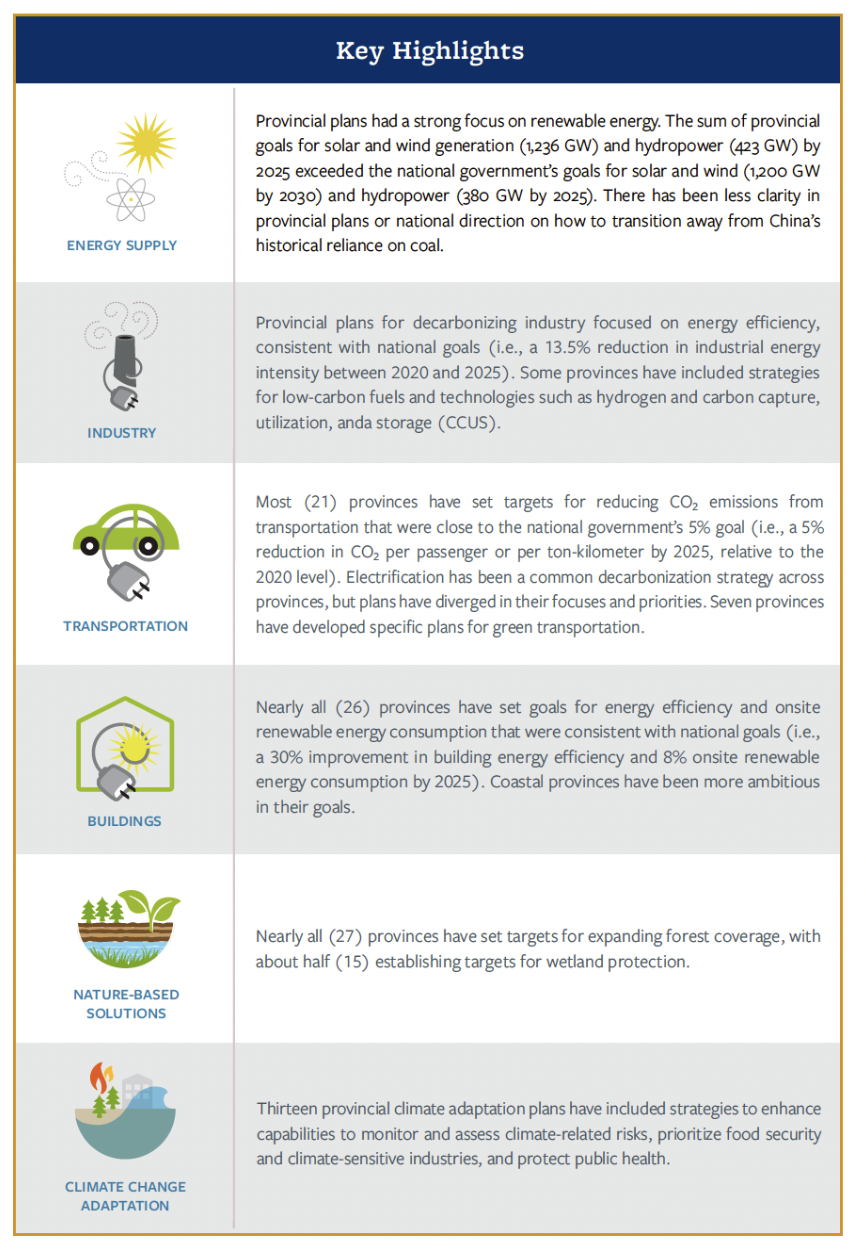China has used five-year plans to orchestrate larger changes in its economy since its first such plan took hold in 1953. China’s 14th five-year plan (2021-2025) provides a window on the country’s pivot towards a lower carbon economy. As preparatory work gains momentum for the 15th five-year plan (2026-2030), insights from the 14th five-year planning period can help to guide efforts.
A new California-China Climate Institute report highlights that national goals in China for reducing carbon dioxide (CO2) emissions have historically been in intensity terms. Neither national nor provincial 14th five-year plans have incorporated absolute limits on emissions. Instead, the 14th five-year plans have continued the central government’s historical preference for CO2 intensity goals, which are set at 18% below the 2020 level by 2025, and 65% below the 2005 level by 2030.
China’s national and provincial governments have made significant progress in their 14th five-year plans. The plans have laid a foundation for climate actions for the coming decades, including administrative and policy changes in industrial, nature-based solutions, and adaptation. At a provincial level, efforts to lay this foundation are uneven as plans reflect tension between national climate goals and the various degrees of alignment with them. Several provinces in China’s northern regions are out of step with national carbon intensity goals, whereas other provinces are on target. Even so, the 14th five-year plans have shown how policy innovation at the provincial level can trickle up to the national level.
Ultimately, reductions in CO2 and other greenhouse gas emissions will come from changes in energy and land use in specific sectors. At a sectoral level, several themes have emerged in the 14th five-year plans illustrated as below:

Learn more:

